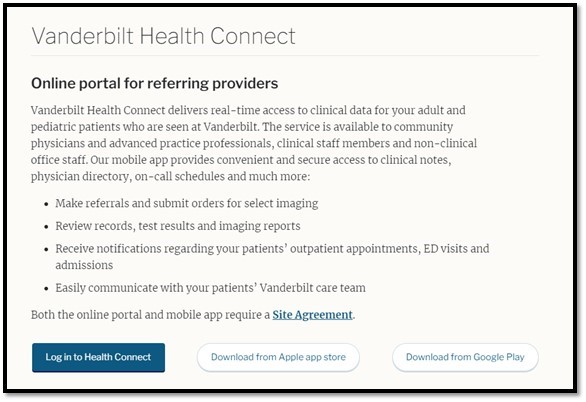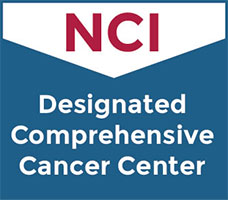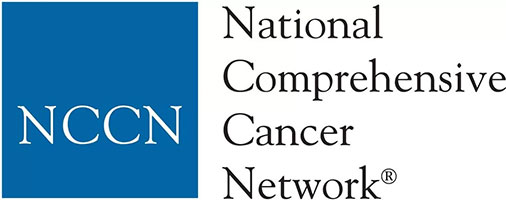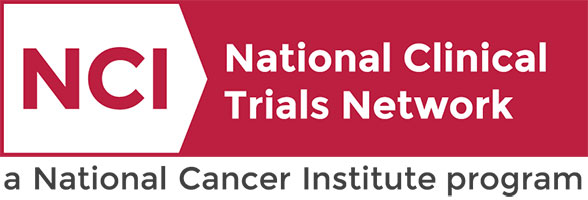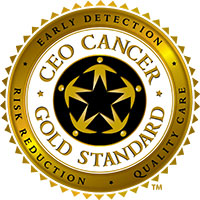Physician Search
 |
 |
| Consuelo Wilkins, MD, MSCI, Senior Vice President for Health Equity and Inclusive Excellence for Vanderbilt University Medical Center (VUMC) and Senior Associate Dean for Health Equity and Inclusive Excellence for Vanderbilt University School of Medicine, always knew she wanted to be a physician. "Health equity was built into everything I did, even if I didn’t know it or recognize it at the time," Wilkins said. "I have always learned and believed that people are the same — everyone deserves to be healthy, and everyone should have the best opportunities to take care of themselves and their families." Click below to learn more about health equity initiatives. https://momentum.vicc.org/2021/09/everyone-deserves-to-be-healthy/ |
Vanderbilt was the lead site for an NIH-funded, phase 2, multicenter influenza vaccine study in pediatric allogeneic hematopoietic stem cell transplant (HCT) recipients that may lead to a change in the current flu vaccine recommendations in this vulnerable population. Natasha Halasa, MD, MPH and colleagues recently published in the New England Journal of Medicine, that two doses of high-dose trivalent flu vaccine resulted in higher amounts of influenza-specific antibodies than two doses of standard dose quadrivalent vaccine. https://news.vumc.org/2023/03/02/high-dose-flu-vaccine-beneficial-for-pediatric-stem-cell-transplant-patients/ |
A Study of Combination Chemotherapy for Patients with Newly Diagnosed DAWT and Relapsed FHWT
Multiple Cancer Types
This phase II trial studies how well combination chemotherapy works in treating patients with newly diagnosed stage II-IV diffuse anaplastic Wilms tumors (DAWT) or favorable histology Wilms tumors (FHWT) that have come back (relapsed). Drugs used in chemotherapy regimens such as UH-3 (vincristine, doxorubicin, cyclophosphamide, carboplatin, etoposide, and irinotecan) and ICE/Cyclo/Topo (ifosfamide, carboplatin, etoposide, cyclophosphamide, and topotecan) work in different ways to stop the growth of tumor cells, either by killing the cells, by stopping them from dividing, or by stopping them from spreading. This trial may help doctors find out what effects, good and/or bad, regimen UH-3 has on patients with newly diagnosed DAWT and standard risk relapsed FHWT (those treated with only 2 drugs for the initial WT) and regimen ICE/Cyclo/Topo has on patients with high and very high risk relapsed FHWT (those treated with 3 or more drugs for the initial WT).
Pediatrics,
Wilms / Other Kidney (Pediatrics)
II
Benedetti, Daniel
NCT04322318
COGAREN1921
A Study to Compare Standard Therapy to Treat Hodgkin Lymphoma to the Use of Two Drugs, Brentuximab Vedotin and Nivolumab
Multiple Cancer Types
This phase III trial compares the effect of adding immunotherapy (brentuximab vedotin and nivolumab) to standard treatment (chemotherapy with or without radiation) to the standard treatment alone in improving survival in patients with stage I and II classical Hodgkin lymphoma. Brentuximab vedotin is in a class of medications called antibody-drug conjugates. It is made of a monoclonal antibody called brentuximab that is linked to a cytotoxic agent called vedotin. Brentuximab attaches to CD30 positive lymphoma cells in a targeted way and delivers vedotin to kill them. A monoclonal antibody is a type of protein that can bind to certain targets in the body, such as molecules that cause the body to make an immune response (antigens). Immunotherapy with monoclonal antibodies, such as nivolumab, may help the body's immune system attack the cancer, and may interfere with the ability of tumor cells to grow and spread. Chemotherapy drugs such as doxorubicin hydrochloride, bleomycin sulfate, vinblastine sulfate, dacarbazine, and procarbazine hydrochloride work in different ways to stop the growth of cancer cells, either by killing the cells, by stopping them from dividing, or by stopping them from spreading. Cyclophosphamide is in a class of medications called alkylating agents. It works by damaging the cells deoxyribonucleic acid (DNA) and may kill cancer cells. It may also lower the bodys immune response. Etoposide is in a class of medications known as podophyllotoxin derivatives. It blocks a certain enzyme needed for cell division and DNA repair and may kill cancer cells. Vincristine is in a class of medications called vinca alkaloids. It works by stopping cancer cells from growing and dividing and may kill them. Prednisone is in a class of medications called corticosteroids. It is used to reduce inflammation and lower the body's immune response to help lessen the side effects of chemotherapy drugs. Radiation therapy uses high energy x-rays to kill tumor cells and shrink tumors. Adding immunotherapy to the standard treatment of chemotherapy with or without radiation may increase survival and/or fewer short-term or long-term side effects in patients with classical Hodgkin lymphoma compared to the standard treatment alone.
Pediatric Lymphoma,
Pediatrics
III
Smith, Christine
NCT05675410
VICC-NTPED23306
Evolutionary Inspired Therapy for the Treatment of Fusion Positive Newly Diagnosed, Metastatic Rhabdomyosarcoma
Multiple Cancer Types
This phase II trial investigates evolutionary inspired therapy in treating fusion positive rhabdomyosarcoma that is newly diagnosed and has spread to other places in the body (metastatic). Chemotherapy drugs, such as vinorelbine, vincristine sulfate, and actinomycin D, work in different ways to stop the growth of tumor cells, either by killing the cells, by stopping them from dividing, or by stopping them from spreading. Cyclophosphamide is used to decrease the body's immune response and may inhibit DNA replication and initiate cell death. This study is being done to determine which of 4 different therapeutic treatments will have the best chance of the disease not worsening or coming back.
Pediatrics,
Sarcoma
II
Borinstein, Scott
NCT04388839
VICCPED2134
Mismatched Related Donor versus Matched Unrelated Donor Stem Cell Transplantation for Children, Adolescents, and Young Adults with Acute Leukemia or Myelodysplastic Syndrome
Multiple Cancer Types
This phase III trial compares hematopoietic (stem) cell transplantation (HCT) using mismatched related donors (haploidentical [haplo]) versus matched unrelated donors (MUD) in treating children, adolescents, and young adults with acute leukemia or myelodysplastic syndrome (MDS). HCT is considered standard of care treatment for patients with high-risk acute leukemia and MDS. In HCT, patients are given very high doses of chemotherapy or radiation therapy, which is intended to kill cancer cells that may be resistant to more standard doses of chemotherapy; unfortunately, this also destroys the normal cells in the bone marrow, including stem cells. After the treatment, patients must have a healthy supply of stem cells reintroduced or transplanted. The transplanted cells then reestablish the blood cell production process in the bone marrow. The healthy stem cells may come from the blood or bone marrow of a related or unrelated donor. If patients do not have a matched related donor, doctors do not know what the next best donor choice is or if a haplo related donor or MUD is better. This trial may help researchers understand whether a haplo related donor or a MUD HCT for children with acute leukemia or MDS is better or if there is no difference at all.
Leukemia,
Myelodysplastic Syndrome,
Pediatric Leukemia,
Pediatric Lymphoma,
Pediatrics
III
Kitko, Carrie
NCT05457556
COGASCT2031
A Study to Evaluate the Efficacy and Safety of Birtamimab in Mayo Stage IV Patients With AL Amyloidosis
Hematologic
Hematologic
A Phase 3 study to evaluate the efficacy and safety of birtamimab plus standard of care
compared to placebo plus standard of care in Mayo Stage IV patients with AL amyloidosis.
compared to placebo plus standard of care in Mayo Stage IV patients with AL amyloidosis.
Hematologic
III
Baljevic, Muhamed
NCT04973137
VICCPCL22109
Inotuzumab Ozogamicin and Post-Induction Chemotherapy in Treating Patients with High-Risk B-ALL, Mixed Phenotype Acute Leukemia, and B-LLy
Multiple Cancer Types
This phase III trial studies whether inotuzumab ozogamicin added to post-induction chemotherapy for patients with High-Risk B-cell Acute Lymphoblastic Leukemia (B-ALL) improves outcomes. This trial also studies the outcomes of patients with mixed phenotype acute leukemia (MPAL), and B-lymphoblastic lymphoma (B-LLy) when treated with ALL therapy without inotuzumab ozogamicin. Inotuzumab ozogamicin is a monoclonal antibody, called inotuzumab, linked to a type of chemotherapy called calicheamicin. Inotuzumab attaches to cancer cells in a targeted way and delivers calicheamicin to kill them. Other drugs used in the chemotherapy regimen, such as cyclophosphamide, cytarabine, dexamethasone, doxorubicin, daunorubicin, methotrexate, leucovorin, mercaptopurine, prednisone, thioguanine, vincristine, and pegaspargase or calaspargase pegol work in different ways to stop the growth of cancer cells, either by killing the cells, by stopping them from dividing, or by stopping them from spreading. This trial will also study the outcomes of patients with mixed phenotype acute leukemia (MPAL) and disseminated B lymphoblastic lymphoma (B-LLy) when treated with high-risk ALL chemotherapy.
The overall goal of this study is to understand if adding inotuzumab ozogamicin to standard of care chemotherapy maintains or improves outcomes in High Risk B-cell Acute Lymphoblastic Leukemia (HR B-ALL). The first part of the study includes the first two phases of therapy: Induction and Consolidation. This part will collect information on the leukemia, as well as the effects of the initial treatment, in order to classify patients into post-consolidation treatment groups. On the second part of this study, patients will receive the remainder of the chemotherapy cycles (interim maintenance I, delayed intensification, interim maintenance II, maintenance), with some patients randomized to receive inotuzumab. Other aims of this study include investigating whether treating both males and females with the same duration of chemotherapy maintains outcomes for males who have previously been treated for an additional year compared to girls, as well as to evaluate the best ways to help patients adhere to oral chemotherapy regimens. Finally, this study will be the first to track the outcomes of subjects with disseminated B-cell Lymphoblastic Leukemia (B-LLy) or Mixed Phenotype Acute Leukemia (MPAL) when treated with B-ALL chemotherapy.
The overall goal of this study is to understand if adding inotuzumab ozogamicin to standard of care chemotherapy maintains or improves outcomes in High Risk B-cell Acute Lymphoblastic Leukemia (HR B-ALL). The first part of the study includes the first two phases of therapy: Induction and Consolidation. This part will collect information on the leukemia, as well as the effects of the initial treatment, in order to classify patients into post-consolidation treatment groups. On the second part of this study, patients will receive the remainder of the chemotherapy cycles (interim maintenance I, delayed intensification, interim maintenance II, maintenance), with some patients randomized to receive inotuzumab. Other aims of this study include investigating whether treating both males and females with the same duration of chemotherapy maintains outcomes for males who have previously been treated for an additional year compared to girls, as well as to evaluate the best ways to help patients adhere to oral chemotherapy regimens. Finally, this study will be the first to track the outcomes of subjects with disseminated B-cell Lymphoblastic Leukemia (B-LLy) or Mixed Phenotype Acute Leukemia (MPAL) when treated with B-ALL chemotherapy.
Pediatric Leukemia,
Pediatrics
III
Friedman, Debra
NCT03959085
COGAALL1732
A Trial Comparing Unrelated Donor BMT With IST for Pediatric and Young Adult Patients With Severe Aplastic Anemia (TransIT, BMT CTN 2202)
Pediatrics
Pediatrics
Severe Aplastic Anemia (SAA) is a rare condition in which the body stops producing enough new
blood cells. SAA can be cured with immune suppressive therapy or a bone marrow transplant.
Regular treatment for patients with aplastic anemia who have a matched sibling (brother or
sister), or family donor is a bone marrow transplant. Patients without a matched family donor
normally are treated with immune suppressive therapy (IST). Match unrelated donor (URD) bone
marrow transplant (BMT) is used as a secondary treatment in patients who did not get better
with IST, had their disease come back, or a new worse disease replaced it (like leukemia).
This trial will compare time from randomization to failure of treatment or death from any
cause of IST versus URD BMT when used as initial therapy to treat SAA.
The trial will also assess whether health-related quality of life and early markers of
fertility differ between those randomized to URD BMT or IST, as well as assess the presence
of marrow failure-related genes and presence of gene mutations associated with MDS or
leukemia and the change in gene signatures after treatment in both study arms.
This study treatment does not include any investigational drugs. The medicines and procedures
in this study are standard for treatment of SAA.
blood cells. SAA can be cured with immune suppressive therapy or a bone marrow transplant.
Regular treatment for patients with aplastic anemia who have a matched sibling (brother or
sister), or family donor is a bone marrow transplant. Patients without a matched family donor
normally are treated with immune suppressive therapy (IST). Match unrelated donor (URD) bone
marrow transplant (BMT) is used as a secondary treatment in patients who did not get better
with IST, had their disease come back, or a new worse disease replaced it (like leukemia).
This trial will compare time from randomization to failure of treatment or death from any
cause of IST versus URD BMT when used as initial therapy to treat SAA.
The trial will also assess whether health-related quality of life and early markers of
fertility differ between those randomized to URD BMT or IST, as well as assess the presence
of marrow failure-related genes and presence of gene mutations associated with MDS or
leukemia and the change in gene signatures after treatment in both study arms.
This study treatment does not include any investigational drugs. The medicines and procedures
in this study are standard for treatment of SAA.
Pediatrics
III
Connelly, James
NCT05600426
VICCPED2295
